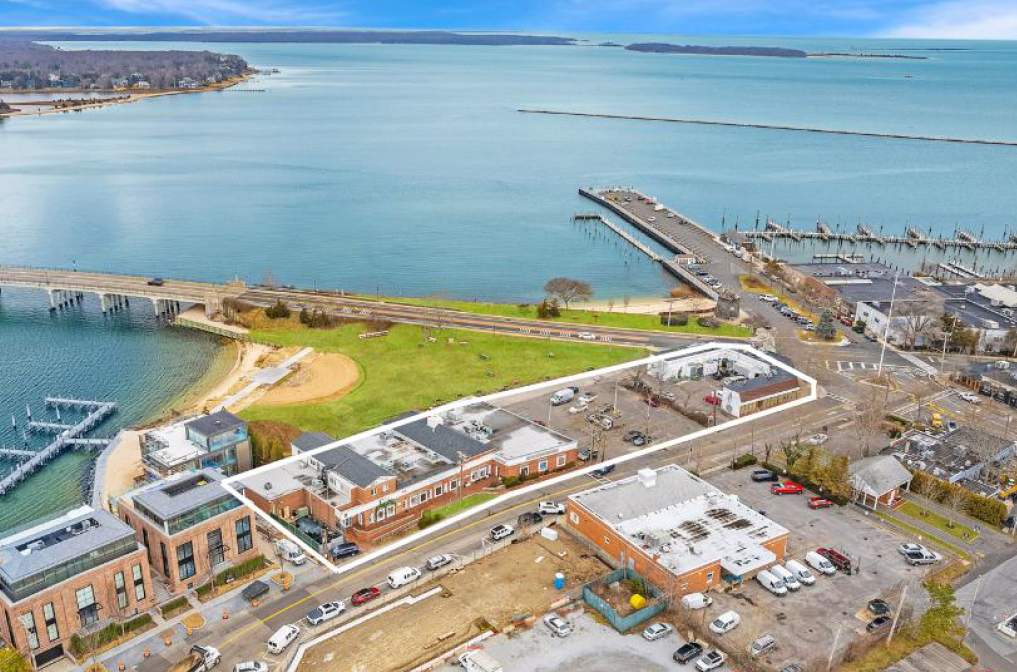The Game Changes: With Global Warming and Rising Seas, Stronger Measures Are Needed

If you fly over eastern Long Island, you will see how our ocean beaches are wide in some places and narrow in others. The situation changes from year to year, and what is narrow today might be wider next year, largely depending upon what happens just offshore, which is where the sand is when not on our beaches. When there are sandbars out there, we often have wide beaches ashore. When there are gullies out there, our beaches often lose sand at an alarming rate as the surf carries it out to fill the holes.
There’s nothing we can do about these sandbars and holes. They come and go. We also cannot do anything about the littoral drift, which daily moves sand from east to west, from the Montauk Lighthouse west to Fire Island and then to the Rockaways and from there out into the gut of New York Harbor. There is also nothing we can do to prevent the sand getting washed out in the wintertime—some people get very alarmed when they first see it—and brought back up in the summer, a movement of sand in the hundreds of millions of tons twice a year.
These are the usual rules that account for the condition our beaches—our award-winning sands—day-to-day and year-to-year. And over the years, this newspaper has long fought to have things left alone so nature can take its course.
We no longer live in usual times, however. It’s quite clear, now that global warming and the melting of our polar ice caps are proceeding relentlessly on, that what’s unusual today is going to be usual tomorrow. Therefore, we should take a hard look at what our current rules are and what they ought to be. Perhaps we should now allow certain kinds of artificial hardened structures along the beaches.
You may not think we have any great stretch with artificial hardened structures at the beach. We have a few jetties here and there, built privately on the ocean, one at Ditch Plains (by Sam Cox) and another at Georgica (by Juan Trippe). Both pre-date zoning. Both could not be built with the rules we have in place today, which prevent not only jetties but also stone walls and revetments. The theory is they not only change what’s pristine and natural, and little good comes from them anyway because the sand piles up on the eastern side of a jetty and gets scoured away on the other side. As for walls and revetments, they in addition block beach access. It’s also felt that in the long run, all hard structures just get torn away, although so far that does not seem to be true.
In any case, it’s not true that the Hamptons are free from hard structures today. There are—and you can see the tips of them on Google Earth—a series of 15 jetties spaced a quarter-mile apart between the foot of Beach Lane in Westhampton Beach and the eastern border of the Village of West Hampton Dunes three miles to the west. Along this three-and-a-half-mile stretch, there is never an erosion problem. The beach has remained several hundred yards wide for two generations, and shows no sign of narrowing. Also, at a quarter mile apart, the jetties do not block public access.
There’s also another part of the ocean beach that has a hard structure. This is a series of 200-foot long, 60-foot-high corrugated panels that were bolted together and driven into the seabed parallel to Dune Road for half a mile along the ocean in the Village of West Hampton Dunes. These panels—used in building coffer dams for the repair of large ships—were put in during the 1990s by the Army Corps of Engineers. They were driven 30 feet into the seabed. They rise up 30 feet above the waterline. And you don’t know they’re there because the Army Corps covered them entirely with sand on both sides, essentially making an enormous quarter-mile-long sand dune with a steel spine. It plugged up a huge breach that appeared in that part of Dune Road in the 1980s. Furthermore, if any sand is lost, the Army Corps is contracted to replenish it every couple of years until 2027. And again, it does not prevent public access to the beach.
This year, because of recent storms, we are experiencing an alarming amount of erosion along our beaches.
In Montauk last November, a wall of more than a dozen giant cesspool rings was placed on the beach in front of the Royal Atlantic and Ocean Beach motels to keep them from falling into the sea. These ugly rings were soon covered up with sand, thus creating a hump of sand protecting those motels.
They’re likely not to be left there, though. Hard structures are against the law on the beach. They are only supposed to be there temporarily.
Meanwhile, in Sagaponack, another erosion control project is underway. A group of approximately 140 homeowners along a six-mile stretch from the East Hampton Town border at Town Line Road the Southampton Village border at Flying Point Road has formed a special taxing district and voted to place approximately two million cubic yards of sand onto the beach at their own expense. This sand is to be pumped in from the ocean and spread evenly in front of these homes at a cost of about $25 million.
It may be legal. But will it work? Anyone who goes down to the beach with any regularity knows that if the ocean wishes to tear out 10 million tons in a few days during a big storm, which it surely did during Superstorm Sandy, it can do so. Just naturally, during the fall, the ocean pulls out about that much sand in every four-mile stretch, only to bring it back in the spring for the summer season. It seems to me, and I’m no expert about this, that if the ocean goes through a violent spell, all this sand will be torn out and then brought back sprinkled along to the west, to Water Mill, Wickapogue and Southampton Town, to people who have not paid for it.
We need jetties to stabilize this new sand. It’s a good idea bringing it in. But it will not stay, in my opinion, unless there are jetties under it.
This winter, my wife and I spent a week down in Miami Beach. Neither of us had been there for 30 years. Back then, the sand along Miami Beach’s shoreline had been all swept out. The sea was threatening the hotels. Today, that five-mile stretch is a broad beach. The government came in, put down stone jetties for strength, then topped it all with sand. The beaches are restored today and look as beautiful as ever.
I believe what ought to be done to protect our beaches during the next 50 years is to build a group of stone jetties sticking out into the ocean from Montauk to Fire Island and then cover them with sand and the oceanfront homeowners should pay for it.
As a matter of fact, when the Army Corps began building them in Westhampton Beach in the 1960s, it was intended that the taxpayers were to pay for it, but it would be ALL the taxpayers, 99.9% of whom did not own oceanfront homes. People protested and demonstrated to have it stopped. Only 15 jetties were built.
No ice caps were melting then. No global warming was underway then. Today is a different story. We have to cope with it, or we will lose our beaches and the homes behind them.



